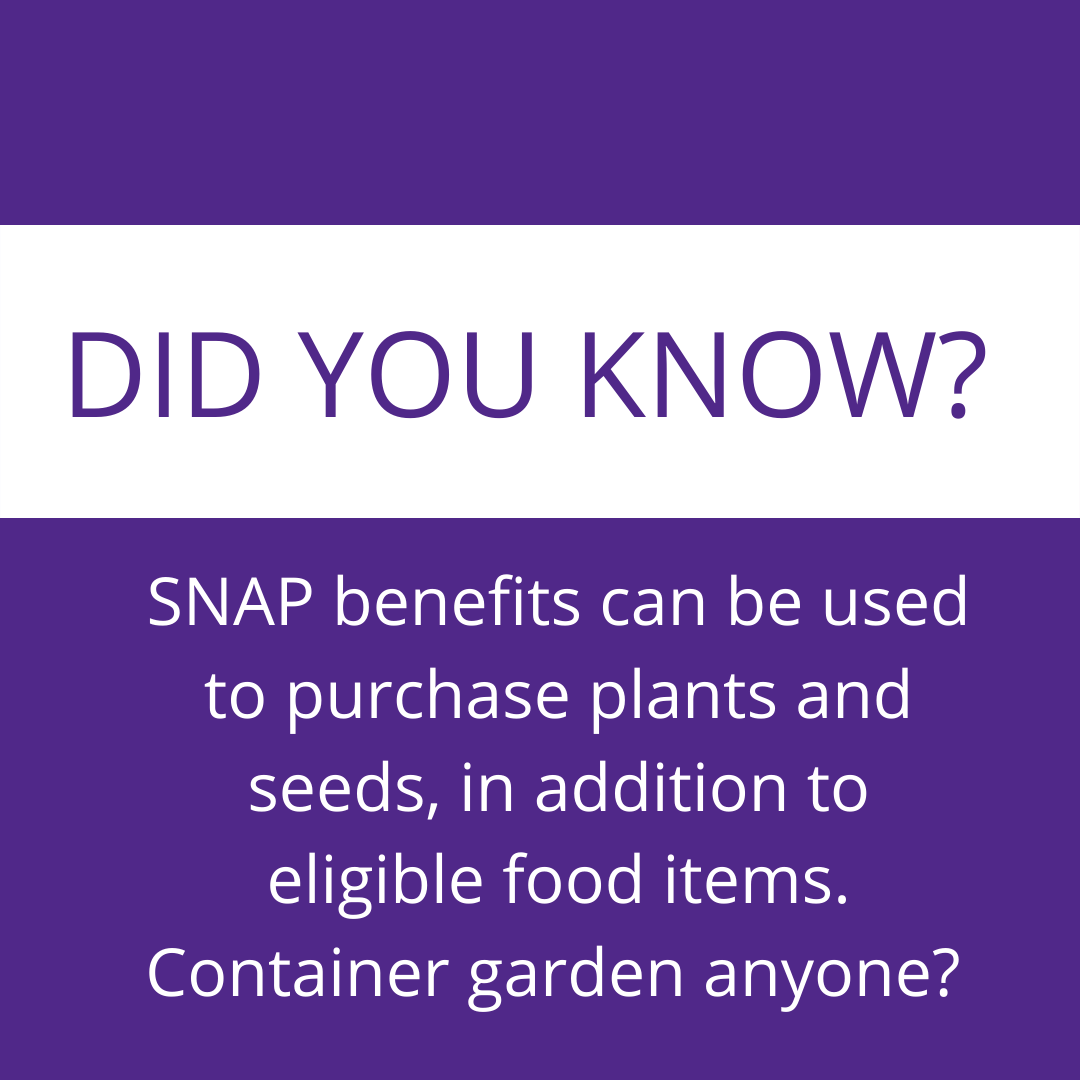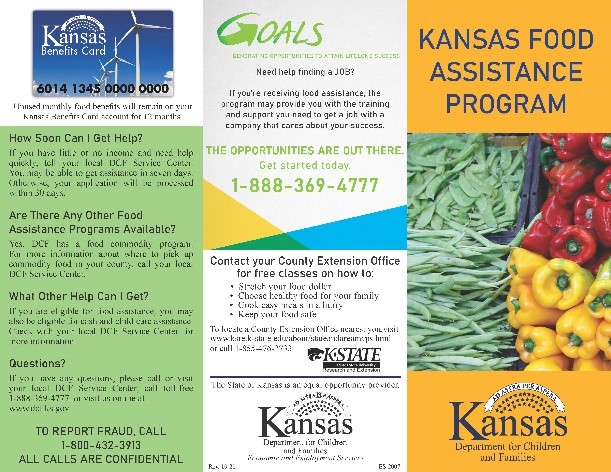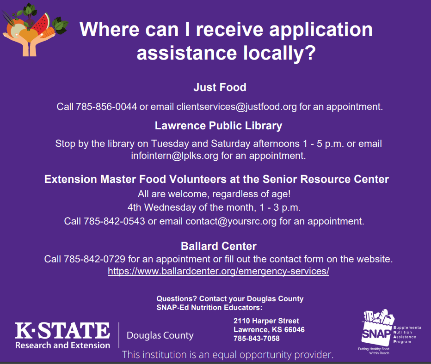SNAP - Why You Should Encourage Eligible Individuals and Families to Apply for SNAP Benefits
by Franzi Willenbuecher, SNAP-Ed Nutrition Educator
The Supplemental Nutrition Assistance Program (SNAP), formerly known as "food stamps," is funded by the United States Department of Agriculture (USDA) and provides low-income households supplemental assistance to cover food costs. SNAP participants are provided a Kansas Benefits (EBT) card, which functions like a debit card, with a monthly balance to use on eligible items.
of Agriculture (USDA) and provides low-income households supplemental assistance to cover food costs. SNAP participants are provided a Kansas Benefits (EBT) card, which functions like a debit card, with a monthly balance to use on eligible items.
In Kansas, the program is referred to as the "Kansas Food Assistance Program" and is administered by the Department for Children and Families.
The SNAP-Ed program serves as an educational component by providing nutrition education to promote healthy choices and active lifestyles. K-State Research & Extension is the implementing agency for the SNAP-Ed program and works closely with the Department for Children and Families.
Why Does It Matter?
- 12% of Kansans experience food insecurity, meaning limited or uncertain availability of nutritionally adequate foods 1.
- Recent data shows that only 69% of all eligible Kansans receive SNAP benefits. That's less than three-quarters of households that would qualify for the program2.
- SNAP provides vital nutritional support for individuals and households with low incomes, including low-wage working families, low-income seniors, and people with disabilities living on fixed incomes. 41% of SNAP households in Kansas are families with children3.
What Are the Benefits of Applying?
To the family/individual:
- The average monthly SNAP benefit amount for Kansas households in 2018 was $2374.
- The minimum monthly benefit is $20 – while this may not seem worth the trouble of going through the application process at first glance, consider the following scenario. Benefits do not have to be spent each month, so even $20 can accumulate and enable participants to afford larger purchases (e.g. a cut of meat) they would be otherwise unable to purchase.
- Receiving an approval letter for SNAP often qualifies participants for additional assistance programs.
To Douglas County as a whole:
- SNAP is funded with federal dollars that are brought into our community through participation in the program.
- $1.00 in SNAP benefits generates $1.70 in economic activity5.
- 80% of SNAP benefits are redeemed within two weeks of receipt and 97% are spent within a month5. This money is spent locally, stimulating the economy, and supporting local businesses.
- Benefits assist households in covering a basic need by providing nutritious food, which helps create healthier families and a healthier community.
What You Can Do:
- Encourage eligible individuals and families you know to apply. Local organizations are providing one-on-one support to assist throughout the application process.
- Share the Kansas Food Assistance Program brochure, which provides information regarding current income levels and requirements.
- Participate in the U.S. Census – program funds are allocated based on census data.
- Become familiar with the Farm Bill, the legislation that funds the SNAP program.
Sources
1 "Food Insecurity Rate", Kansas Health Matters, https://www.kansashealthmatters.org/indicators/index/view?indicatorId=2107&localeId=19
2 "SNAP Participation Rates by State, All Eligible People", USDA, https://www.fns.usda.gov/usamap#
3 "Percentage of Participating SNAP Households with Chidlren (FY 2018)", USDA, https://www.fns.usda.gov/SNAP-State-characteristics#
4 "SNAP Household State Averages for SNAP benefits (FY 2018), USDA, https://www.fns.usda.gov/SNAP-household-state-averages#
5 Rosenbaum, Dottie, "SNAP Is Effective and Efficient", Center on Budget and Policiy Priorities, 11, March, 2013, https://www.cbpp.org/research/snap-is-effective-and-efficient#:~:text=Moody's%20Analytics%20estimates%20that%20in,jobs%20in%20a%20weak%20economy.
Additional Links
Kansas Food Assistance Food Program Brochure


